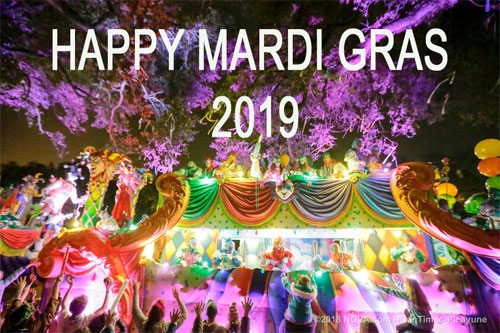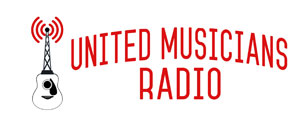 Happy Fat Tuesday everyone!
Happy Fat Tuesday everyone!
Yes it’s finally here. Mardi Gras that is.
What’s the big deal?
Mardi Gras, or Fat Tuesday, refers to events of the Carnival celebration, beginning on or after the Christian feasts of the Epiphany (Three Kings Day) and culminating on the day before Ash Wednesday (known as Shrove Tuesday).
Mardi Gras is actually French for “Fat Tuesday.” It’s “Fat Tuesday” because it’s our last chance to eat rich, fatty foods before the ritual fasting of the Lenten season which starts the next day, Ash Wednesday.
Got it?
And of course the biggest “Fat Tuesday” celebration in America is in New Orleans. That Mardi Gras celebration is world famous.
Actually, Fat Tuesday is celebrated all over the world with various Mardi Gras celebrations. Europe and Latin America are big for celebrating “Shrove Tuesday” and in Brazil, Carnaval is the most famous Brazilian holiday, and lasts for weeks.
Professor Longhair’s Definitive Mardi Gras Song
Professor Longhair and The Meters – Introduction by Dr. John
But here in America we look to Norlins’ for the epitome of Mardi Gras celebrations. Here’s how it “shakes” out down there.
As originally a French settlement, New Orleans as it came to be known, was a natural place to start the tradition. The first Mardi Gras parade held in New Orleans is recorded to have taken place in 1837. The tradition in New Orleans expanded to the point that it became synonymous with the city in popular perception, and embraced by residents of New Orleans beyond those of French or Catholic heritage.
Mardi Gras celebrations are part of the basis of the slogan Laissez les bons temps rouler (“Let the good times roll”). On Mardi Gras Day the last parades of the season wrap up and the celebrations come to a close with the Meeting of the Courts (known locally as the Rex Ball).
Parades were a participatory celebration with everyone dressing up in costumes including dressing up as fairies, animals, people from myths, or various Medieval costume.
Mardi Gras Indians
A big part of these parades is the “masking” and the “walk” that many Mardi Gras Indian groups take. Mardi Gras Indians have been parading in New Orleans at least since the mid-19th century, possibly before.
The history of the Mardi Gras Indians is shrouded in mystery and folklore and finding accurate information on how this group came into being is still difficult. Needless to say when cultures mix interesting things happen.
With New Orleans being the first location where African slaves were dropped off, and the famous Congo Square being the location where these slaves were sold at auction, New Orleans was bound to be an important touchpoint for African Americans and their slave story.
As slaves escaped they often were shielded by the local native american tribes. As these cultures “got to know each other” traditions mixed and new variations of the black and indian traditions evolved.
On Mardi Gras in 1885, fifty to sixty Plains Indians marched in native dress on the streets of New Orleans. Later that year, the first Mardi Gras Indian gang was formed; the tribe was named “The Creole Wild West” and was most likely composed of members of Buffalo Bill’s Wild West show, though the “Indian gangs” might predate their appearance in the parades.
When African Americans were banned from mainstream Mardi Gras Krewes, they created their own celebration know as Carnival in their own neighborhoods. Delayed but not deterred, various communities of eager paraders took to their respective neighborhoods and began celebrating on their own. These various communities would continue on to make up their own tribes (Krewes) of Mardi Gras Indians for decades on. Their krewes are named for imaginary Indian tribes according to the streets of their ward or gang.
Over time, these diverse indian/black groups formed their own tribes. Today there are close to 50 discrete tribes.
Today the tribes are composed mostly of African American members and the Native American component as disappeared.
The parading of these tribes is an annual tradition on Mardi Gras day as well as other holidays throughout the year. In addition to Mardi Gras Day, many of the tribes also parade on Saint Joseph’s Day (March 19) and the Sunday nearest to Saint Joseph’s Day (“Super Sunday”). Traditionally, these were the only times Mardi Gras Indians were seen in public in full regalia. They often mask and parade only in there own neighborhoods. On Mardi Gras day you can see these “walks” take place throughout the city.
The Mardi Gras Indian costumes are a story unto itself. Tribes work all year creating their costumes and some weigh as much as 150 lbs. Tribes compete against each other to see who has the “prettiest” suits that year. It’s an integral part of the tradition and the costume competition has replaced violence as the main form of competition during the walk.
Tribes can be as small as 5-10 people or as large as 30-40. The actual parade lineup is very specific though. It begins with “spyboys,” dressed in light “running suits” that allow them the freedom to move quickly in case of emergency. Next comes the “first flag,” an ornately dressed Indian carrying a token tribe flag. Closest to the “Big Chief” is the “Wildman” who usually carries a symbolic weapon. Finally, there is the “Big Chief.” The “Big Chief” decides where to go and which tribes to meet (or ignore). The entire group is followed by percussionists and revelers.
The parade route changes every year and is kept a secret until the end. The “Big Chief” decides where the group will parade; the parade route is different each time.
When two tribes come across each other, they either pass by or meet for a symbolic fight. Each tribe lines up and the “Big Chiefs” taunt each other about who is the “prettiest” in their suits and their tribes. The drum beats of the two tribes intertwine, and the face off is complete. Both tribes continue on their way.
In the early days these fights were not “symbolic” and violence was common and an integral part of the the parade. The “walk” was used as a time to settle scores and meter out retribution for apparent sins.
In modern day, the violence has subsided but the day is still used to settle scores between the tribes, if only to determine the “prettiest” tribe of the day.
The Music
With New Orleans being a cultural gumbo of various ethnicities including French, African American, Native American and Cajun cultures, the music of Mardi Gras was diverse as the population. The mix of music and cultures takes shape in a musical styles that you hear in the music around the city that day.
Live Mardi Gras Coverage
The Indians have their own music for the parade. Typically call-and-response chanting with tambourines and other handheld percussion playing a central role in the Mardi Gras Indian parading.
With their formal hierarchy, the Indians grace the streets of New Orleans’ neighborhoods in friendly competition over which tribe is the “prettiest.” The famous New Orleans tune “Iko Iko” with the lyrics, “My flag boy and your flag boy, sitting by the fire,” is rooted in Mardi Gras Indian tradition as is the New Orleans standard “Hey Pocky Way.”
But New Orleans music covers a wide range of styles and those styles are mixed into the musical gumbo of the day. In addition to the Indian march music, rock, funk, cajun and jazz are integral to the New Orleans sound, however one sound dominates the parades all over the city.
But on Mardi Gras day you’ll be hearing a particular style of music that dominates all the parades. This groove, dance, feel, or however you want to call it is the 2nd Line Groove.
2nd Line
The 2nd Line groove is identified as being unique to New Orleans music but of course it probably didn’t originate there. But it’s clearly the beat that most parades “walk” to. It’s also very common in the funeral marches that take place whenever there’s a funeral march.
2nd line parade video
How to Play 2nd Line Groove on Drums
Here’s a video for you drummers out there, or any musician who wants to learn the 2nd line groove.
Of course, here at United Musicians Radio we are celebrating Mardi Gras with Norlins’ music all day long. Just leave the music on in the background and you can celebrate Fat Tuesday all day with us.
Here’s some videos from past Mardi Gras to help you get in the spirit of today’s celebration, wherever you are.


